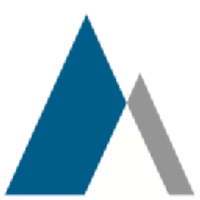
BioArctic AB
STO:BIOA B


| US |

|
Johnson & Johnson
NYSE:JNJ
|
Pharmaceuticals
|
| US |

|
Berkshire Hathaway Inc
NYSE:BRK.A
|
Financial Services
|
| US |

|
Bank of America Corp
NYSE:BAC
|
Banking
|
| US |

|
Mastercard Inc
NYSE:MA
|
Technology
|
| US |

|
UnitedHealth Group Inc
NYSE:UNH
|
Health Care
|
| US |

|
Exxon Mobil Corp
NYSE:XOM
|
Energy
|
| US |

|
Pfizer Inc
NYSE:PFE
|
Pharmaceuticals
|
| US |

|
Palantir Technologies Inc
NYSE:PLTR
|
Technology
|
| US |

|
Nike Inc
NYSE:NKE
|
Textiles, Apparel & Luxury Goods
|
| US |

|
Visa Inc
NYSE:V
|
Technology
|
| CN |

|
Alibaba Group Holding Ltd
NYSE:BABA
|
Retail
|
| US |

|
3M Co
NYSE:MMM
|
Industrial Conglomerates
|
| US |

|
JPMorgan Chase & Co
NYSE:JPM
|
Banking
|
| US |

|
Coca-Cola Co
NYSE:KO
|
Beverages
|
| US |

|
Walmart Inc
NYSE:WMT
|
Retail
|
| US |

|
Verizon Communications Inc
NYSE:VZ
|
Telecommunication
|
Utilize notes to systematically review your investment decisions. By reflecting on past outcomes, you can discern effective strategies and identify those that underperformed. This continuous feedback loop enables you to adapt and refine your approach, optimizing for future success.
Each note serves as a learning point, offering insights into your decision-making processes. Over time, you'll accumulate a personalized database of knowledge, enhancing your ability to make informed decisions quickly and effectively.
With a comprehensive record of your investment history at your fingertips, you can compare current opportunities against past experiences. This not only bolsters your confidence but also ensures that each decision is grounded in a well-documented rationale.
Do you really want to delete this note?
This action cannot be undone.

| 52 Week Range |
139.9
277
|
| Price Target |
|
We'll email you a reminder when the closing price reaches SEK.
Choose the stock you wish to monitor with a price alert.

|
Johnson & Johnson
NYSE:JNJ
|
US |

|
Berkshire Hathaway Inc
NYSE:BRK.A
|
US |

|
Bank of America Corp
NYSE:BAC
|
US |

|
Mastercard Inc
NYSE:MA
|
US |

|
UnitedHealth Group Inc
NYSE:UNH
|
US |

|
Exxon Mobil Corp
NYSE:XOM
|
US |

|
Pfizer Inc
NYSE:PFE
|
US |

|
Palantir Technologies Inc
NYSE:PLTR
|
US |

|
Nike Inc
NYSE:NKE
|
US |

|
Visa Inc
NYSE:V
|
US |

|
Alibaba Group Holding Ltd
NYSE:BABA
|
CN |

|
3M Co
NYSE:MMM
|
US |

|
JPMorgan Chase & Co
NYSE:JPM
|
US |

|
Coca-Cola Co
NYSE:KO
|
US |

|
Walmart Inc
NYSE:WMT
|
US |

|
Verizon Communications Inc
NYSE:VZ
|
US |
This alert will be permanently deleted.
 BioArctic AB
BioArctic AB
BioArctic AB
Investor Relations
In the heart of Sweden, BioArctic AB carves its niche as a pioneering biopharmaceutical company with a resolute focus on neurodegenerative disorders such as Alzheimer’s and Parkinson’s diseases. Founded in 2003 by the innovative minds of Professor Lars Lannfelt and Dr. Pär Gellerfors, the company draws on cutting-edge science to develop novel treatments that target the underlying causes of these debilitating conditions. BioArctic’s scientific journey is rooted in its strategic use of monoclonal antibodies to halt or reverse the progression of neurological diseases. By zeroing in on the amyloid beta proteins and alpha-synuclein aggregates that play significant roles in Alzheimer’s and Parkinson’s diseases, respectively, BioArctic aims to provide therapies that go beyond mere symptom management to address the fundamental disease processes.
At the core of BioArctic’s financial engine lies its collaborative business model, where strategic partnerships with pharmaceutical giants like Eisai and AbbVie are pivotal. These alliances not only bolster BioArctic’s research capabilities but also generate substantial revenue through milestone payments and royalties. Such collaborations allow BioArctic to leverage the vast distribution networks and financial muscle of its partners, facilitating the global commercialization of its therapies once they achieve regulatory approval. As the company continues to advance its pipeline through rigorous clinical trials, its combination of scientific rigor and strategic partnerships positions it as a formidable player in the quest to unravel and treat complex neurodegenerative diseases. Through its relentless innovation and well-crafted alliances, BioArctic stands at the forefront of transforming medical treatment for millions worldwide.

In the heart of Sweden, BioArctic AB carves its niche as a pioneering biopharmaceutical company with a resolute focus on neurodegenerative disorders such as Alzheimer’s and Parkinson’s diseases. Founded in 2003 by the innovative minds of Professor Lars Lannfelt and Dr. Pär Gellerfors, the company draws on cutting-edge science to develop novel treatments that target the underlying causes of these debilitating conditions. BioArctic’s scientific journey is rooted in its strategic use of monoclonal antibodies to halt or reverse the progression of neurological diseases. By zeroing in on the amyloid beta proteins and alpha-synuclein aggregates that play significant roles in Alzheimer’s and Parkinson’s diseases, respectively, BioArctic aims to provide therapies that go beyond mere symptom management to address the fundamental disease processes.
At the core of BioArctic’s financial engine lies its collaborative business model, where strategic partnerships with pharmaceutical giants like Eisai and AbbVie are pivotal. These alliances not only bolster BioArctic’s research capabilities but also generate substantial revenue through milestone payments and royalties. Such collaborations allow BioArctic to leverage the vast distribution networks and financial muscle of its partners, facilitating the global commercialization of its therapies once they achieve regulatory approval. As the company continues to advance its pipeline through rigorous clinical trials, its combination of scientific rigor and strategic partnerships positions it as a formidable player in the quest to unravel and treat complex neurodegenerative diseases. Through its relentless innovation and well-crafted alliances, BioArctic stands at the forefront of transforming medical treatment for millions worldwide.





























 You don't have any saved screeners yet
You don't have any saved screeners yet
